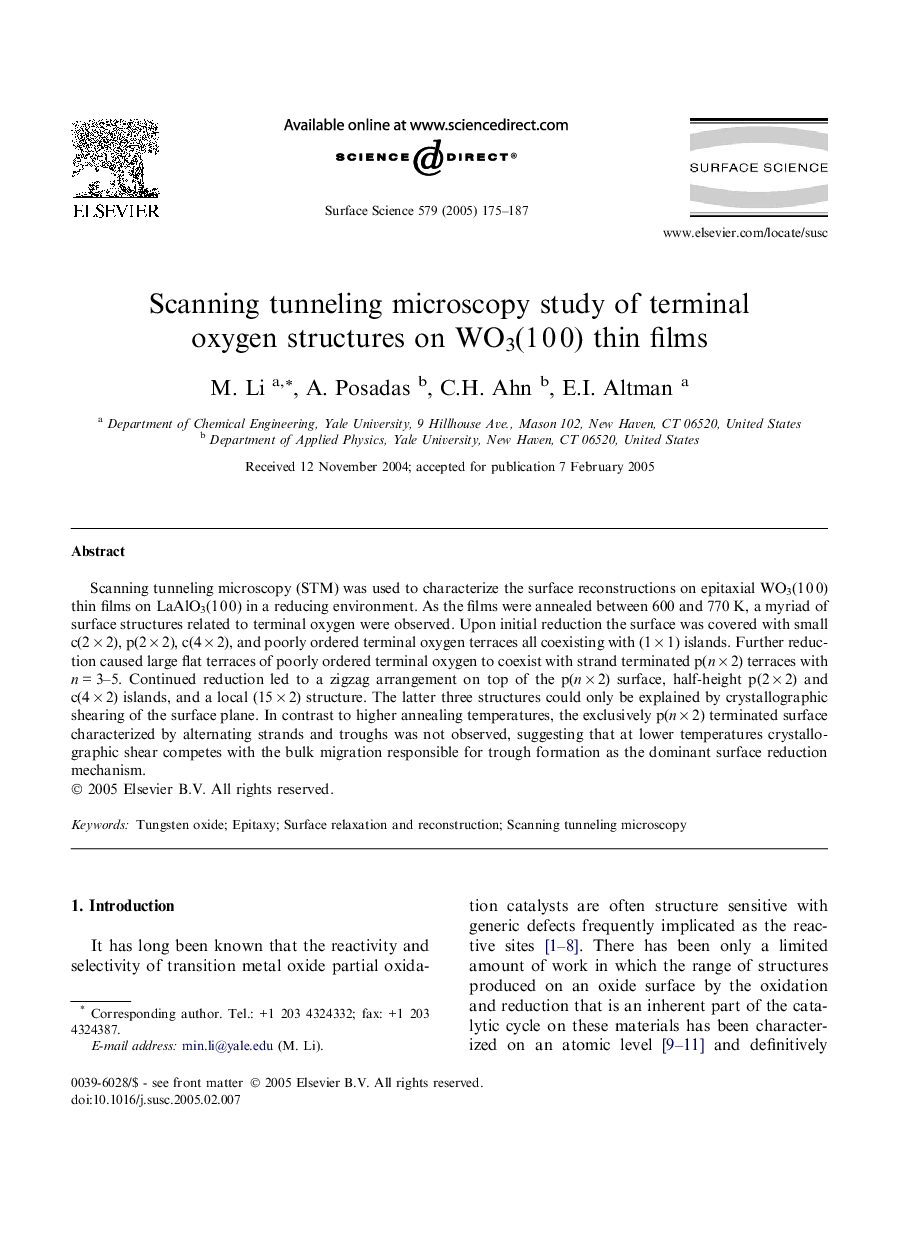| Article ID | Journal | Published Year | Pages | File Type |
|---|---|---|---|---|
| 9595254 | Surface Science | 2005 | 13 Pages |
Abstract
Scanning tunneling microscopy (STM) was used to characterize the surface reconstructions on epitaxial WO3(1 0 0) thin films on LaAlO3(1 0 0) in a reducing environment. As the films were annealed between 600 and 770 K, a myriad of surface structures related to terminal oxygen were observed. Upon initial reduction the surface was covered with small c(2 Ã 2), p(2 Ã 2), c(4 Ã 2), and poorly ordered terminal oxygen terraces all coexisting with (1 Ã 1) islands. Further reduction caused large flat terraces of poorly ordered terminal oxygen to coexist with strand terminated p(n Ã 2) terraces with n = 3-5. Continued reduction led to a zigzag arrangement on top of the p(n Ã 2) surface, half-height p(2 Ã 2) and c(4 Ã 2) islands, and a local (15 Ã 2) structure. The latter three structures could only be explained by crystallographic shearing of the surface plane. In contrast to higher annealing temperatures, the exclusively p(n Ã 2) terminated surface characterized by alternating strands and troughs was not observed, suggesting that at lower temperatures crystallographic shear competes with the bulk migration responsible for trough formation as the dominant surface reduction mechanism.
Related Topics
Physical Sciences and Engineering
Chemistry
Physical and Theoretical Chemistry
Authors
M. Li, A. Posadas, C.H. Ahn, E.I. Altman,
